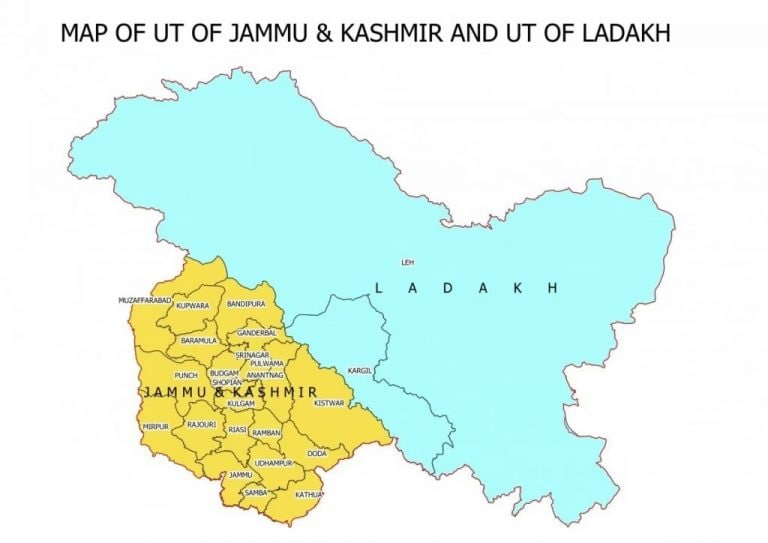CURRENT AFFAIRS
Get the most updated and recent current affair content on Padhaikaro.com
Delimitation Panel
- Vaid's ICS, Lucknow
- 08, Feb 2022

G.S. II
Topics Covered: Indian Constitution- historical underpinnings, evolution, features, amendments, significant provisions and basic structure.
Context:
The Jammu and Kashmir Delimitation Commission (headed by retired Supreme Court Judge Justice Ranjana Prakash Desai) has submitted its interim report. As per the report:
- Of the 90 Assembly seats, 28 new Assembly constituencies have been reconfigured or renamed.
- 19 Assembly segments have been deleted.
- All the five Lok Sabha seats will be redrawn.
- The Shri Mata Vaishno Devi constituencyhas been identified as the smallest of all with just 73,648 votes in the Jammu region.
Delimitation exercise in J&K- a timeline:
- The first delimitation exercise, carving out 25 assembly constituencies in the then state, was carried out by a Delimitation Committee in 1951.
- The first full-fledged Delimitation Commissionwas formed in 1981 and it submitted its recommendations in 1995 on the basis of 1981 Census. Since then, there has been no delimitation.
- In 2020, the Delimitation Commission was constituted to carry out the exercise on the basis of 2011 Census, with a mandate to add seven more seats to the Union Territory’ and grant reservations to SC and ST communities.
- Now, the total number of seats in Jammu and Kashmir will be raised to 90 from the previous 83. This is apart from 24 seats which have been reserved for areas of PoK and have to be kept vacant in the Assembly.
What is delimitation and why is it needed?
The Delimitation Commission for Jammu and Kashmir was constituted by the Centre on March 6 last year to redraw Lok Sabha and assembly constituencies of the union territory in accordance with the provisions of the Jammu and Kashmir Reorganisation Act, 2019 and Delimitation Act, 2002, passed by the Centre in August 2019 along with other J&K-specific Bills.
What is Delimitation?
Delimitation literally means the process of fixing limits or boundaries of territorial constituencies in a state that has a legislative body.
Who carries out the exercise?
- Delimitation is undertaken by a highly powerful commission. They are formally known as Delimitation Commissionor Boundary Commission.
- These bodies are so powerful that its orders have the force of law and they cannot be challenged before any court.
Composition of the Commission:
According to the Delimitation Commission Act, 2002, the Delimitation Commission will have three members: a serving or retired judge of the Supreme Court as the chairperson, and the Chief Election Commissioner or Election Commissioner nominated by the CEC and the State Election Commissioner as ex-officio members.
Constitutional Provisions:
- Under Article 82, the Parliament enacts a Delimitation Act after every Census.
- Under Article 170, States also get divided into territorial constituencies as per Delimitation Act after every Census.
Facts for Prelims
Aravalli Biodiversity Park
On World Wetlands Day, that is, on February 2, the Aravalli Biodiversity Park (Gurugram) was announced as the first Other Effective Area – based Conservation Measures site, OECM site.
The OECM tag is provided by the International Union for Conservation of Nature, IUCN. According to IUCN, the OECM sites are not protected but are rich in biodiversity.
- The OECM areas were defined at the Convention on Biological Diversity that was held in 2018.
- The OECM tag does not bring any legal, financial or management implications, but designates the area as a biodiversity hotspot on the international map.
- ‘Other effective area-based conservation measures’ (OECMS) is a conservation designation for areas that are achieving the effective in-situ conservation of biodiversity outside of protected areas.
The Aravalli Biodiversity Park is spread across 390 acres and has semi-arid vegetation, with around 300 native plants, 101,000 trees, 43,000 shrubs, and several species of birds.
- The Aravallis, one of the oldest mountain ranges in the world, are considered the green lungs of Delhi-NCR, a crucial water recharge zone for the region. They also support rich fauna, including leopards, sambhar, fox, jackals and palm civets among others.